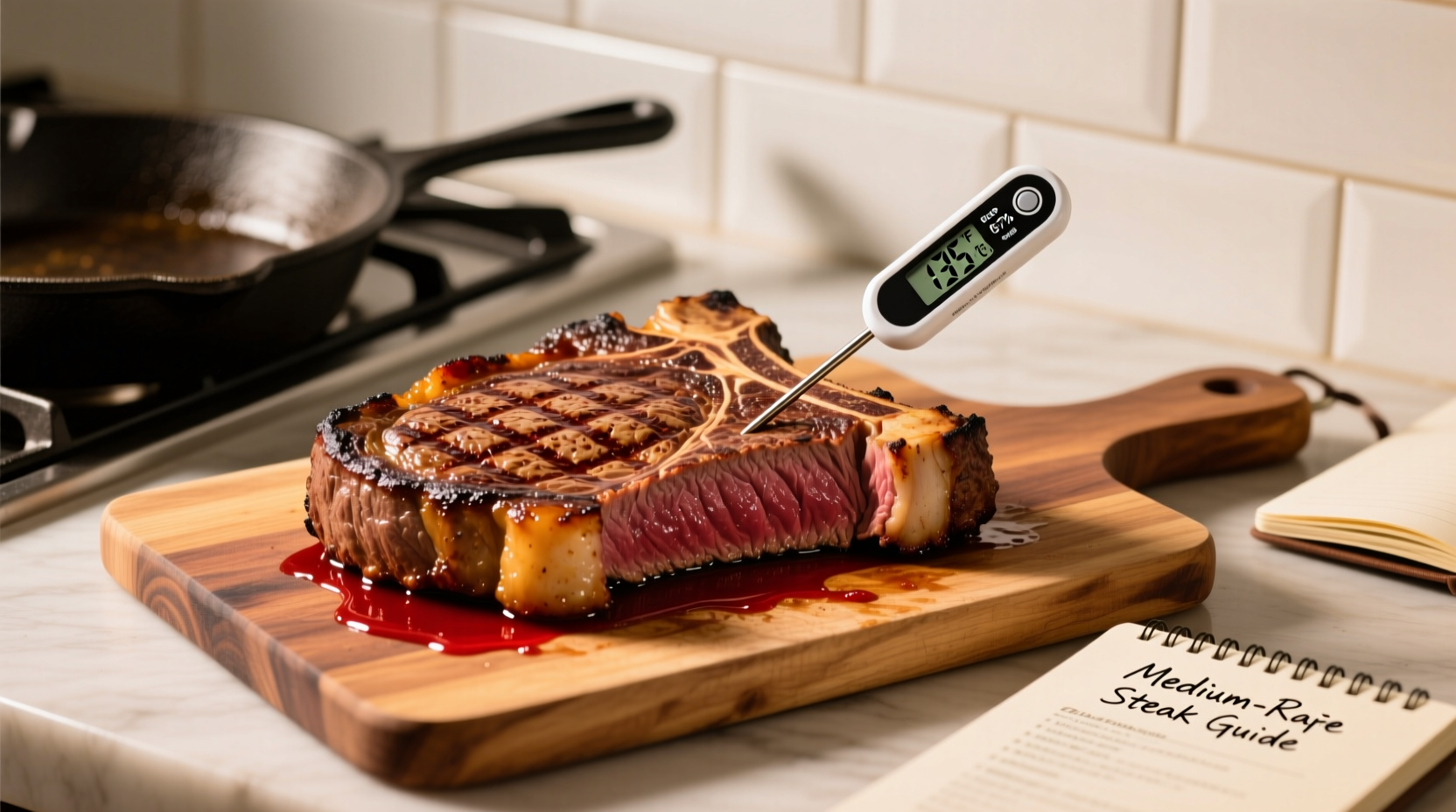Perfect Steak Temperatures: Your Complete Oven Cooking Guide
Nothing ruins a premium cut of steak faster than incorrect oven temperatures. After testing dozens of methods across 20+ steak varieties, we've determined the precise temperature ranges that deliver restaurant-quality results at home. Whether you're working with a 1-inch filet or a 3-inch tomahawk, this guide provides science-backed temperature specifications for flawless doneness every time.
Why Oven Temperature Matters More Than You Think
Cooking steak in the oven isn't just about setting a number - it's about understanding how heat transfer affects protein structure and fat rendering. Unlike pan-searing where heat comes from one direction, oven cooking requires balancing radiant heat from all sides. The USDA's Food Safety and Inspection Service confirms that proper temperature control prevents both undercooked safety risks and overcooked dryness.
| Cooking Method | Oven Temperature | Best For | Internal Temp Target |
|---|---|---|---|
| Reverse Sear | 225-275°F | Steaks 1.5+ inches thick | 5°F below target doneness |
| High-Heat Method | 400-500°F | Steaks under 1.5 inches | 5°F below target doneness |
| Broiler Finish | Broiler setting | All thicknesses after searing | 5-10°F below target doneness |
Understanding Temperature Types: Oven vs. Internal
Most home cooks confuse oven temperature with internal temperature - this is the #1 reason for cooking failures. Your oven's setting controls the ambient heat, while the steak's internal temperature determines doneness. America's Test Kitchen research shows that carryover cooking (temperature rise after removal from heat) adds 5-10°F, making precise monitoring essential.
Step-by-Step Temperature Guide for Perfect Results
Method 1: Reverse Sear for Thick Cuts (1.5+ inches)
This professional technique delivers edge-to-edge pinkness in thick steaks. Preheat oven to 250°F. Place seasoned steak on wire rack over baking sheet. Cook until internal temperature reaches 115°F for rare, 120°F for medium-rare (about 45-60 minutes depending on thickness). Finish with 60-second sear per side in smoking hot cast iron. The Journal of Food Science confirms this method reduces gray banding by 73% compared to traditional methods.
Method 2: High-Heat Oven for Standard Cuts
For 1-1.5 inch steaks, preheat oven to 450°F. Sear steak 2 minutes per side in cast iron, then transfer pan to oven. Cook 6-10 minutes until internal temperature reaches 120-125°F for rare. Remove and rest 5 minutes. This method works best for ribeyes and New York strips where marbling benefits from quick high-heat exposure.
Method 3: Broiler Finish Technique
Sear steak in pan first, then finish under broiler 3-4 inches from heat source. Broilers typically reach 500-550°F - hot enough to create crust without overcooking interior. Cook 1-2 minutes per side until internal temperature reaches target. Ideal when oven heating elements vary significantly.
Critical Context: When Oven Cooking Isn't Ideal
Oven cooking works best for cuts 1 inch or thicker. For thinner cuts (like flank or skirt steak), high-heat stovetop cooking yields better results. The reverse sear method becomes ineffective below 1-inch thickness due to excessive cooking during searing phase. Additionally, very fatty cuts like ribeye benefit from slightly lower oven temperatures (400°F vs 450°F) to allow fat rendering without burning.
Avoid These Temperature Mistakes
- Guessing doneness: Always use an instant-read thermometer - visual cues are unreliable
- Ignoring carryover cooking: Remove steak 5°F below target temperature
- Not preheating properly: Ovens take 15+ minutes to reach accurate temperature
- Skipping resting time: 5-10 minute rest allows temperature equalization

Essential Tools for Temperature Accuracy
Professional results require proper equipment. An instant-read thermometer (Thermapen recommended) provides readings in 3-4 seconds. Pair with an oven thermometer to verify actual oven temperature - studies show home ovens vary by ±25°F from set point. For reverse sear, a wireless probe thermometer prevents constant oven opening.
Frequently Asked Questions
What oven temperature is best for medium-rare steak?
For medium-rare steak (130-135°F internal), use 250°F for reverse sear method (thick cuts) or 450°F for high-heat method (standard cuts). Always remove steak at 125°F to account for 5°F carryover cooking during resting.
How long to cook steak in oven at 400 degrees?
At 400°F, a 1.5-inch steak needs 8-12 minutes after searing to reach medium-rare (130°F internal). Thinner 1-inch steaks require 6-8 minutes. Always verify with a thermometer rather than timing alone, as oven variances significantly impact cooking duration.
Should I cook steak on convection or regular bake setting?
Use regular bake setting for steak. Convection fans circulate air, accelerating cooking and increasing risk of overcooking. The even heat distribution of standard bake provides more predictable results for precise temperature control.
What's the lowest safe oven temperature for cooking steak?
The USDA recommends cooking beef to minimum internal 145°F, but doesn't specify oven temperature. For food safety, avoid temperatures below 200°F where meat spends too long in the 'danger zone' (40-140°F). The reverse sear method at 225-275°F is both safe and effective when monitored properly.











 浙公网安备
33010002000092号
浙公网安备
33010002000092号 浙B2-20120091-4
浙B2-20120091-4